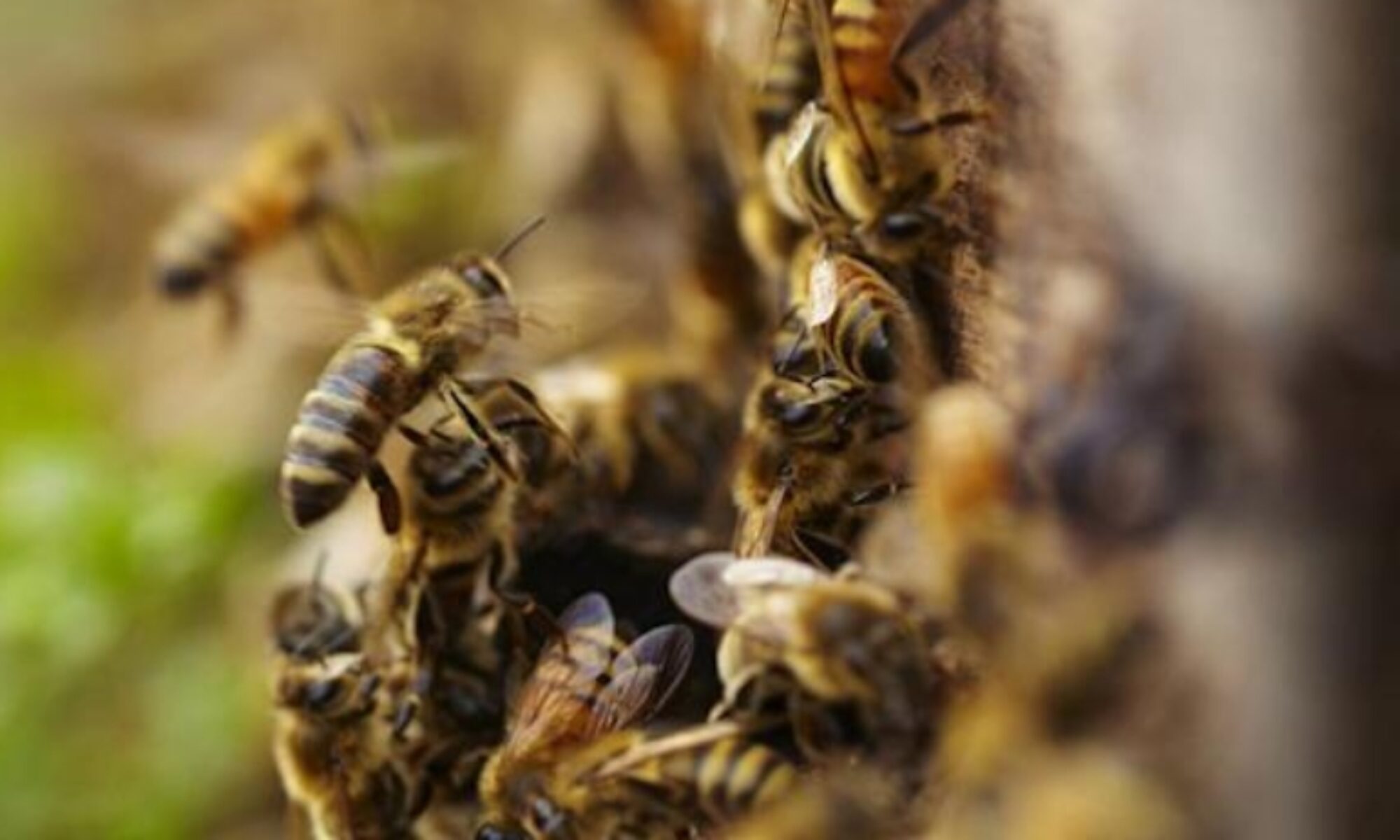The EZ-Bees hosting box is the size wild bees like. But what do you do when the box is too small and the hive needs to grow. Here is a discussion from the facebook – Treatment-Free Layens Hives group. A wealth of knowledge.
“I feel like a teenager that won’t listen to his parents and has to make his own mistakes”
Thoughts on Taranov and walkaway splits by Andrew Gardner and Angella Tollerson

I wanted to increase my apiary by catching swarms only, per Keeping Bees With A Smile, which I still think is the best way. Unlike with many of YOU, though, here in the high desert plains of Colorado, swarms are very unreliable. (For 3 years I put out 5-10 bait hives and only caught one swarm in all that time!)
I decided last year that I needed to learn to split. I really liked the idea of the Taranov split since it so closely mimics natural swarming, and you may have seen me singing its praises in this group. But after doing it 3 times (and killing the queen while doing it the third time!), I’ve decided that it’s a complicated procedure during which a lot can go wrong, and it’s difficult to do with large, heavy Layens hives that can’t be disassembled like vertical hives.
I turned back to the de Layens book and noticed that his splitting procedure in paragraph 163 (diagram above) is the same concept as a Taranov split, with the improvement of using 2 hives to create the split instead of just 1. And, naturally, it’s much more adapted for use with his hive!
I’ve now decided that all along I should have just listened to the guy who invented my hive! If I don’t need a lot of new colonies, I’ll follow his splitting procedure in paragraph 163. If I lose a lot of colonies and need to make more splits, then I’ll follow his splitting procedure in paragraph 234 (which is basically a walk away split) since it only requires one colony for the split. And also hopefully supplement the splitting with a caught swarm once in a while! I’ll report back in a year or two on how it’s working!
Angela Tollerson I think I mentioned this earlier in PM but posting here for all to benefit: you can safely replicate the Taranov with much less stress by doing a shook swarm directly into a hive body. So instead of shaking frames onto a sheet you do it into a hive body with no live brood frames moved into the new hive. I personally would find the queen first and extract her safely with fingers or queen catcher and then gently release her into the shook swarm hive. Now, the question everyone is asking is why shake when you can do a walk away split with frames? Because to truly replicate the ecological benefit of a swarm you have to not vector mites in brood with the new split. The only mites you move are the phoretic ones on the nurse bees which they have 8 broodless days to hygienically groom from each other or might fall off the bees as in a swarm.
Andrew Gardner yes! I took that advice to heart and was amazed to see that that’s exactly what de Layens’ split method above is! He does mention moving one frame of brood, though, which I wouldn’t do. He doesn’t give the rationale, but I’m thinking it’s to give them a little honey and so that they can make a queen in case something happens to her in the process because he says, “one frame containing both brood of all ages and honey”.
Angela Tollerson Sounds like it was just to give them a head start since they don’t have the benefit of gorging honey to build up the way that a swarmed does. You could certainly move a few frames of honey over for them to help them get going. But I don’t think the brood is prudent if you’re trying to replicate a swarm.
Andrew Gardner I would definitely give them some frames of honey, but I agree…no brood! My thought also would be to do as I was doing with the Taranov splits: to smoke them a fair amount before the process in order to try to get them to gorge on honey a bit.
Mark Stoddard Jr. just curious what your plan is when you don’t want to expand your apiary anymore? Do you allow the bees to swarm and hope they find a safe home? I just did another split yesterday and two more of my hives swarmed while I was in the apiary! I’m at 9 hives with no more equipment and I will need to use swarm traps as temporary hives if making summer splits. When I get to 10 hives I have no urge to expand and would sell nucs but don’t know enough people in my area with Layens. Too many bees! What a problem to have 🙂
Andrew Gardner Indeed! What a problem to have! I’ve never had a hive swarm to my knowledge! I always have had bait hives around my apiary, and there’s basically no habitat for them around here, and I work from home, so I do think I probably would know if they had. But I’m also very prompt at adding frames when needed. But, yes, that was my plan…if all of my hives survive the winter and I don’t want more, my plan was to leave them alone and if they swarm to hopefully catch the swarm in one of my bait hives and give/sell them to someone else.
David Liedlich I do not have room to expand my apiary. I do a split every spring for several reasons. 1) To make up for winter loss. 2) As part of my mite management, the queenless hive goes through a broodless period. 3) I don’t have to buy bees. 4) I split a strong hive that came through winter and would swarm. I split them before they do that. If I time it right, I do it before there are queen cells. I prefer to move the old queen to the empty hive, to mimic swarming.
Mark Stoddard Jr. This is exactly what I do every spring too but I had 4 hives overwinter and now after splitting them and catching swarms I’m almost at my capacity. I typically do summer splits to avoid late swarms too but this year I’m stumped on wh…
Ross Millard I always thought walk away splits were very simple and pretty close to what happened naturally. Minus the part where they take a few frames with them.
Dan Irish Ok Andrew, my friend, let’s talk. First is it five or is it ten?? LOL I’m not being difficult but that’s a significant difference. I would encourage you to get ten up, every year. Maybe I’m misunderstanding,maybe you started with five and now are up to ten. If that’s the case, kudos. Next, remember swarms go in cycles just like all things. So maybe in the high plains of CO, the last three years have been the valley of your swarms cycle. When we were still in NC, I spoke with many of the local Beeks. They recount some years they would see, catch or hear about very few swarms. The last couple of years down there, some are catching 20 PLUS. My point is don’t get discouraged based on one in the last three years. The next aspect of your experience is location you’ve been hanging traps. Are you moving them around? I’m highly confident you know what to look for, maybe hang a couple in areas you initially thought……naw I’ll pass. I always like to note if a location didn’t attract a swarm one year, nothing goes back there, at least for a couple years. You may be on the verge of catching ten in one season. Splits. I’m not a big fan of splits for a number of bee perspective reasons. (sorry side note: I always wondered how the bees decide who’s leaving/staying when they swarm. Do they have a point system? Merit? Or do they just line up and count off by twos? 1’s stay 2’s leave??). I digress. When growing an apiary you really have to split. I know you’ve described it and are a fan but TBH I don’t know the Taranov split. I do walkaways. Call me a lazy Beek. Maybe I’m just getting old and have no desire to find the queen. Maybe I just like to do a split in ten minutes so as not to disrupt more than needed. Bottom line as you are increasing your apiary, indeed split survivor stock. Would be interested to hear how you killed the queen.
Andrew Gardner I had 9-10 bait hives out the last 2 years, about 5 the year before that, and 2 the year before that. And, yes, I moved them around. I am friends with the swarm coordinator for the local beekeeping association, and he did say that the number of swarms has been on a steady decline year to year. Lately, he mostly just gets calls for swarms from Lang beeks feeding lots of sugar to packages. LOL. But I’ll keep trying to catch swarms because I like getting that genetic diversity!

